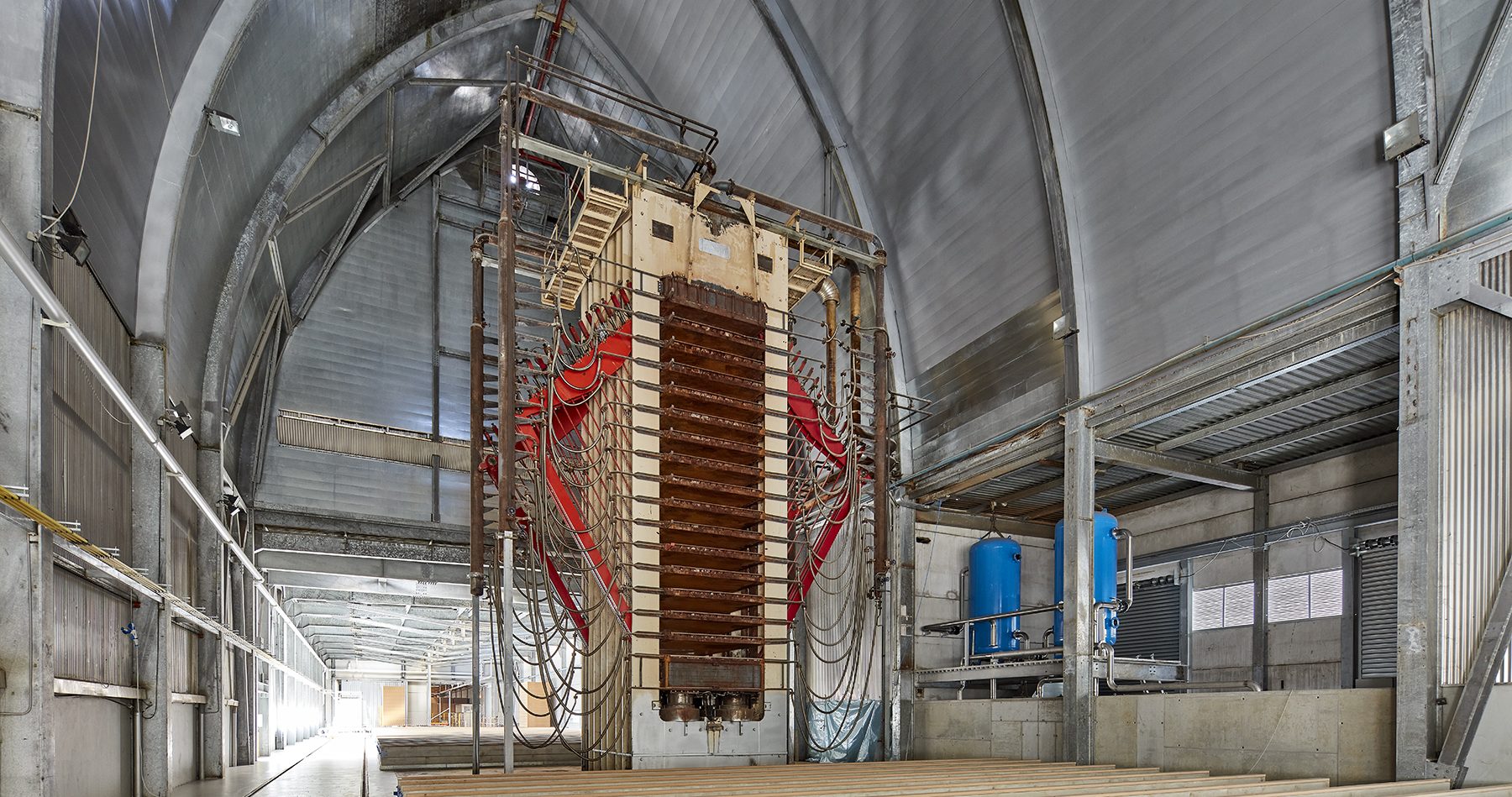This is largely thanks to the architectural approach taken by Gino Valle between 1972 and 2001, staunchly pursued by Fantoni over time, and continued in the more recent work of Studio Valle from 2014 to the present day. The buildings – primary geometrical shapes – connect and communicate with their contents – machinery, conveyor belts and ducts, both inside and outside. While maintaining a certain autonomy of form, they interact visually, having been produced using industrial materials in serial finishes with a minimalist texture. Like a giant three-dimensional cubist still life, pipes, chimneys and networks of ducts are overlaid on ribbed metallic surfaces and volumes, creating added levels of depth and height that transform with the reflected sunlight, projecting onto the mountain landscape in the background. There is no hard and fast rule for this composition/interpenetration, and this leaves scope for changes in function over time, layering different forms in a dynamic juxtaposition. The landscape thus created has different “figures” and underlying surfaces that tie the whole campus together.
The recent creation of the Plaxil 8 production plant, containing a large linear press for the production of MDF panels, meant that much of the existing machinery became obsolete, but at the same time it unified the Fantoni Campus, thanks to the creation of the Sigmat rack line. This aerial transportation system takes the finished MDF panels from Plaxil 8, and carries them mechanically over the outdoor spaces between the different buildings to reach the existing warehouses, setting them in context within a new production hierarchy. With its ribbed metal exterior, the Sigmat rack line is a new overhead building, comprising linear sections and centralised blocks, set atop the existing warehouses and alongside the Plaxil 5 “cathedral”. Created by Gino Valle in 1985 with an acute arch profile, Plaxil 5 housed the first MDF production press, bought from Fantoni, and became the chief icon of the campus over the years, with its curved, silvery exterior in corrugated metal.
Plaxil 5’s Pagnoni multi-opening press has stood idle for the past three years, and could all-too-easily have been dismantled and demolished, but then what would have been left in the “gothic” nave of this “cathedral”, created especially to house it? Giovanni and Paolo Fantoni decided instead to restore the building and its contents, and to preserve them as a testament to the company’s history, while building new production plants in the surrounding spaces. The historic press has been repainted, and the diagonal arms that bear down on the press now stand out boldly in red under the steep arch, covered in metal slats that have also been cleaned up and given a fresh coat of paint. The overall impact is as iconic as the exterior of the building, and perfectly documents a historic moment of growth for the company, in which the acquisition of production techniques for MDF panels was introduced alongside furniture production.
In the linear spans flanking the “cathedral” a new mechanised warehouse has been set up, with a base of serial girders and tracks along which stacks of MDF panels run, all lined up and ready for a final sanding. The interior structure of the western side of the roof, where the Sigmat rack line runs, has been fitted with added rafters to reinforce the beams and help bear the added weight above. This is just one of numerous metal-based structural interventions conceived by Dr Mario Gallinaro of MG Projects, the structural engineering studio that has worked alongside Fantoni and Studio Valle in the creation of Plaxil 8 and various other works around the campus.
Today, both inside and outside Plaxil 5, old and new, elements of history and contemporary repurposing, look one another in the eye. This embodies a continuity of growth focused on a combination of innovation in production and architectural quality. It shows how the old can happily coexist with the new, and how repurposing can be integrated into the communication of corporate identity.
Architect Pietro Valle

